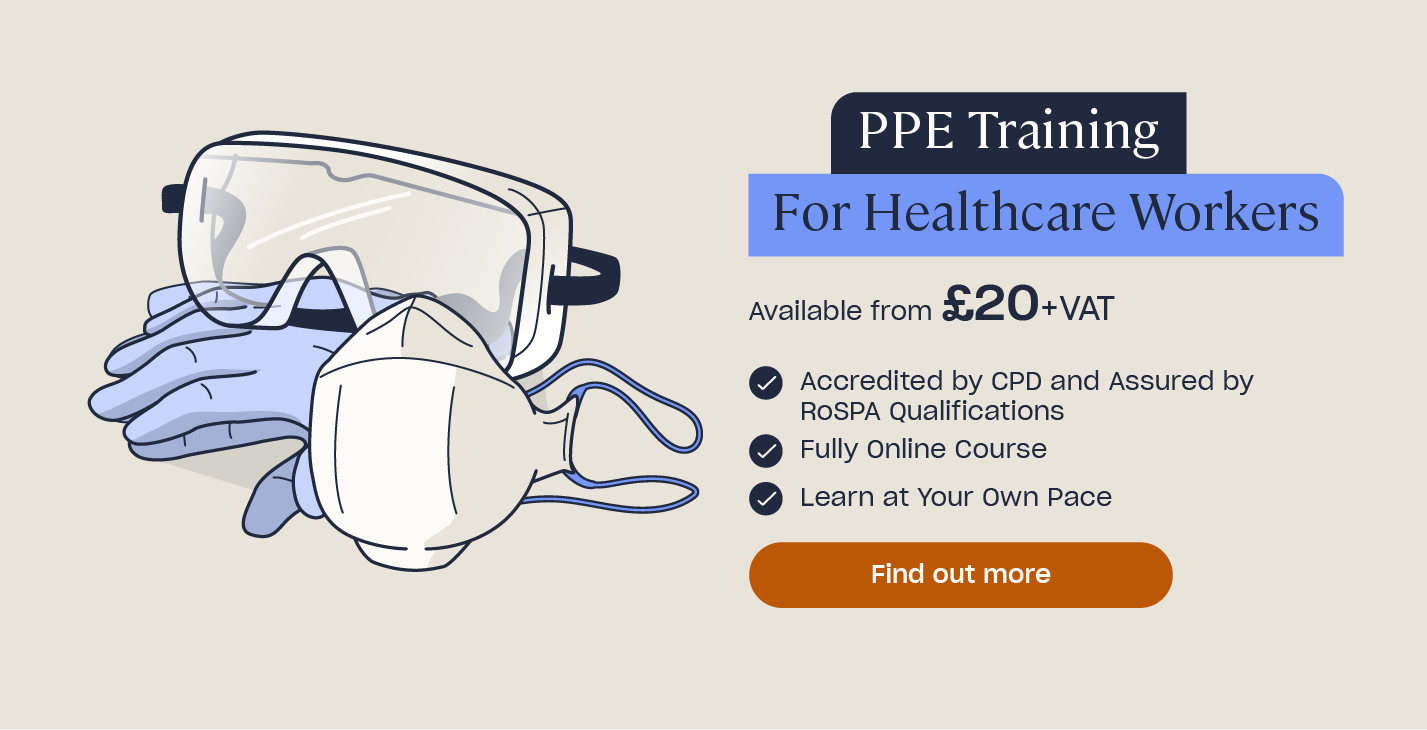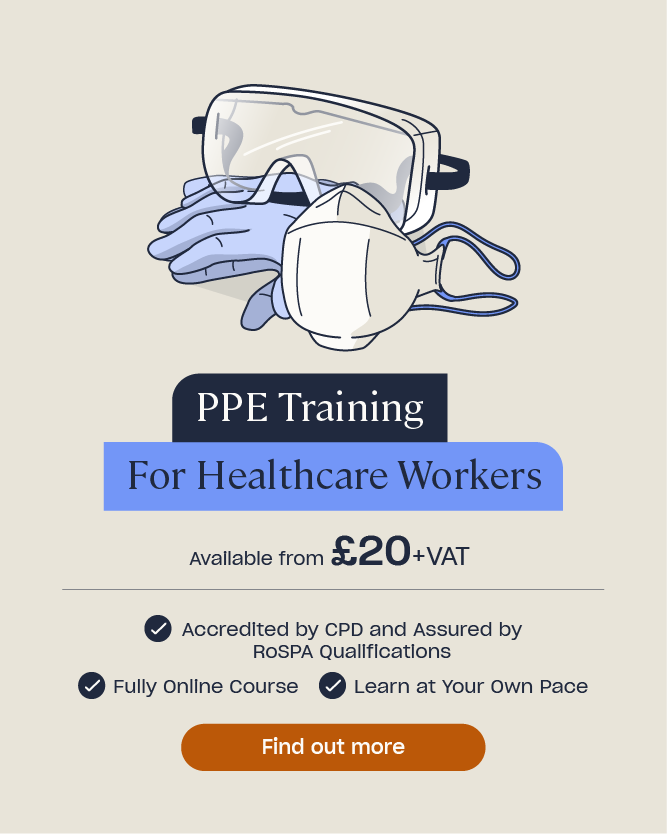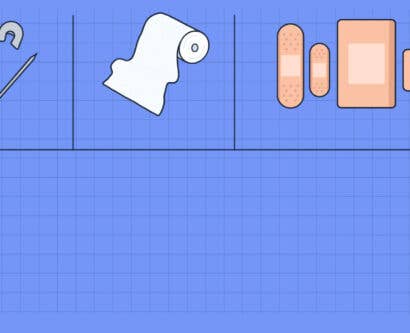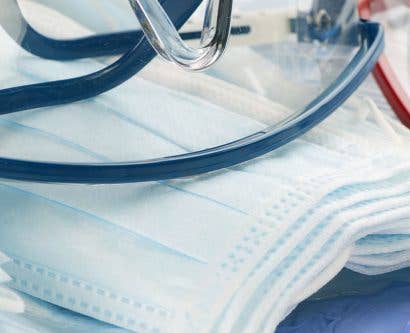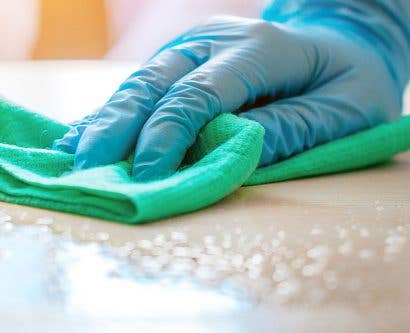What Are the Different Types of Healthcare Waste and Why Are They Important?
Healthcare activities are responsible for producing a lot of waste, much of which is simply unavoidable. This includes the 16 billion injections that are administered globally every year, as estimated by the WHO. These have to be disposed of because there is no decontamination method that removes the risk of serious infection and enables it to be reused. However, sometimes different types of healthcare waste such as needles and sharps aren’t disposed of correctly. This can pose a serious risk to health and safety and the environment.
If you handle healthcare materials, particularly that which is hazardous, you must dispose of it in the correct waste stream. This article explains what the different types of healthcare waste are and why it is important to segregate and dispose of them accordingly.
Types of Healthcare Waste
Healthcare activities produce varying types of waste. The majority is generated by activities that are non-hazardous, accounting for 85% of the total amount produced. The remaining 15% is hazardous waste that is potentially infectious, toxic or radioactive. The type of healthcare waste that is produced largely depends on the location, whether that be a hospital or a care home, and the specific work activities the setting carries out.
Healthcare waste may include materials such as dressings used on a patient who is either infectious or non-infectious, contaminated PPE, needles and sharps, human body parts, chemical substances, expired drugs or medicines, and nappies. If you handle healthcare waste, you have a responsibility to ensure you are disposing of it correctly. You will come to understand why this is important in the following section on the hazards associated with healthcare waste.

Healthcare waste should be separated into different types, known as waste streams. Understanding the different types of waste will prevent you from being responsible for causing hazards associated with incorrect disposal. Below, we have summarised the main types of healthcare waste that you may need to be aware of, depending on what you handle, by waste stream.
Clinical Waste
Clinical waste (sometimes referred to as ‘healthcare waste’) is that which poses a risk of infection or contamination. This means if someone was to come into contact with it, it is potentially hazardous to their health. Clinical waste includes items that have been contaminated with body fluids such as needles and sharps, dressings and bandages, and PPE.
Some clinical waste streams are suitable for putting in chemicals and pharmaceuticals, but not all. For example, if you need to dispose of chemically contaminated samples, you must check that the clinical waste stream you are placing them in actually accepts it.
Cytotoxic Waste
This is a very specific type of waste steam that consists of cytotoxic and/or cytostatic drugs, including any materials contaminated with it. Cytotoxic medicines are often used for the treatment of cancers and other diseases and so are commonly used in hospitals and some other healthcare facilities. Any medicine containers with this residue or used sharps, or an item such as a swab used during the treatment of cytotoxic or cytostatic medicines, must be correctly disposed of. Failure to do so may result in people coming into contact with them.
Cytotoxic waste is hazardous and unintended exposure can cause symptoms including abdominal pain, vomiting, liver damage and foetal loss or malformations in the children of pregnant women.
Offensive Waste
Waste that is non-clinical, non-infectious and doesn’t contain any chemical substances or pharmaceuticals is classed as offensive waste. While it is not hazardous, it can be unpleasant to come into contact with. It includes PPE that hasn’t been contaminated with body fluids and so poses no risk of infection, as well as materials such as used dressings, stoma or catheter bags, nappies, incontinence pads and maternity waste.

Domestic Waste
Domestic waste may be referred to as either municipal or general and is similar to household waste. It is not hazardous and the potential for harm is low, and so materials placed in this stream are usually disposed of in landfill sites or through recycling.
Anatomical Waste
All anatomical waste must be disposed of safely in the correct waste stream. This includes materials such as recognisable body parts and placentas. While anatomical waste may not be hazardous to health, it must be treated correctly due to its sensitive nature if it was to be unexpectedly discovered.
Hazards Associated with Healthcare Waste
Depending on what type it is, healthcare waste can potentially pose many hazards. Incorrect disposal and therefore unintended exposure to healthcare waste can result in numerous risks, both to human health and the environment. Understanding the consequences that your actions may have should help you to recognise why it is so important to dispose of healthcare waste correctly.

Human Health Risks
As explained, healthcare waste may be contaminated with microorganisms from infectious patients. If these are not handled and disposed of as per your organisation’s procedure, you risk causing harm to anyone who comes into contact with them. This may include patients, other healthcare workers, waste disposal handlers and processors, or the general public.
In addition, needles and sharps that have been incorrectly disposed of may cause an injury that could be serious. For example, it could spread the infection of conditions like hepatitis A, B or C if a puncture wound is experienced. You may also be compromising the health and safety of those whose job it is to handle and sort healthcare waste.
To help reduce the health risks caused by healthcare waste, you have a responsibility to ensure you are disposing of any waste correctly at all times. If you were to put healthcare waste in the incorrect stream, or dispose of it incorrectly by another means, you may be placing your organisation at risk of breaking the law.
Environmental Risks
As well as the risks to human health, you should also be aware of the environmental consequences that may arise if you dispose of healthcare waste incorrectly. For example, if you were to put chemically-contaminated dressings into general waste instead of the clinical waste stream that accepts chemicals and pharmaceuticals, this would then undergo a different treatment process than is necessary/intended. This means that the hazardous waste could end up as landfill where it is likely to pollute the soil and potentially contaminate groundwater.
There is also a danger that incorrect waste disposal may cause air pollution. For example, waste that should not undergo incineration may accidentally be treated this way and emit harmful pollutants into the atmosphere. Furthermore, environmental risks will also have an impact on human health, for example, in terms of the polluted air which people may breathe in. If healthcare materials containing chlorine are incinerated it can produce dioxins and furans which are carcinogenic to humans. This means that they may cause cancer or have a range of other damaging effects on human health.
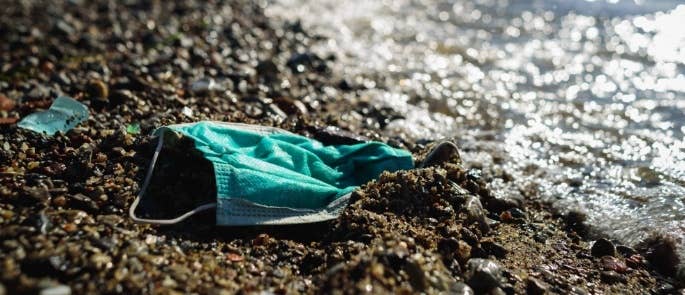
This is why it is so important to correctly dispose of healthcare waste. Your seemingly small action can result in dangerous consequences for both individuals and the environment. These can easily be avoided if you ensure you are following your workplace’s procedures at all times.
Methods of Healthcare Waste Management
Managing healthcare waste is essential for ensuring that health and social care activities limit the spread of infection. It is the responsibility of providers (and/or employers) to consider this risk and manage it accordingly, informing all employees of the protocol they must follow. The main factors they will need to take into consideration are how to safely manage healthcare waste and act in compliance with the relevant legislation, the types of waste and how it should be stored, and waste transportation.
To ensure you are adhering to health and safety legislation, the factor that will affect you most will be the safe storage and disposal of healthcare waste by type. This means properly segregating waste and placing it in the correct stream, as listed above. To help you with this, Trusts will adopt a waste management colour coding system whereby bags and containers of a particular colour will indicate what should be placed inside for disposal.
While this system may vary between organisations, the Department of Health and Social Care (DHSC) has published best practice guidelines that outline what colour should indicate which waste stream. However, your place of work may follow a different colour scheme, so it is always best to check with a senior member of staff in your workplace if unsure.
The standard colour coding system suggested by the DHSC and followed by many NHS Trusts for each waste stream is as follows.
Clinical Waste
Clinical waste should be placed into either yellow or orange bags or lidded receptacles, depending on whether it contains any chemicals or pharmaceuticals. If the healthcare waste does contain chemicals, even small traces, you should put it in yellow waste containers. It will then be disposed of by incineration in a suitably permitted or licensed facility.
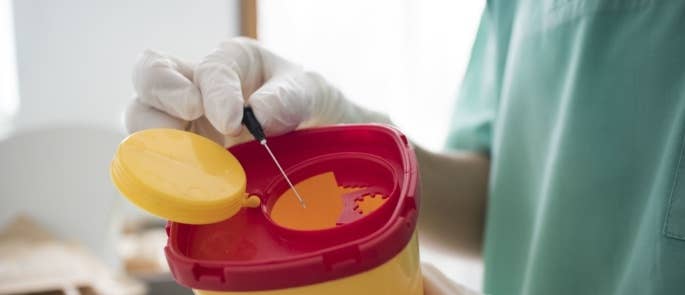
If the waste doesn’t contain any chemicals or pharmaceuticals, you can place it in orange bags or lidded receptacles. Unlike waste that has been contaminated this way, it may undergo indicative treatment or disposal at an alternative treatment plant (ATP) to ensure it’s rendered safe.
Cytotoxic Waste
Cytotoxic and cytostatic waste should be disposed of in purple bags or containers. It will then undergo indicative treatment or treatment through incineration at a suitably permitted or licensed facility.
Offensive Waste
You should place offensive waste in yellow and black (tiger) striped bags. It will then be sent to undergo indicative treatment, be disposed of as landfill or through municipal incineration.
Domestic Waste
Any domestic waste should be placed into general waste bags, such as black bin liners. It may then go on to be disposed of as landfill, undergo incineration or another waste treatment process. Materials that can be recycled may be segregated and removed.
Anatomical Waste
Anatomical waste should be put into red bags. It must then be disposed of through incineration at a suitably permitted facility.
You should now understand what the different types of healthcare waste are and which streams the most common types come under. Recognising why it is important to correctly dispose of all waste created by health and social activities should encourage you to think more carefully when doing so.
Remember that the colour coded system for healthcare waste at your place of work may differ to that which is outlined here and recommended by the DHSC. If you do have any queries, you must always speak to a senior member of staff for clarification.
Further Resources:
- Online Personal Protective Equipment (PPE) Training for Healthcare Workers
- 7 Steps of Hand Washing
- Needles and Sharps Quiz
- Sharps & Needlestick Risk Assessment Template
- Personal Protective Equipment (PPE) in Healthcare Quiz
- Online Needles and Sharps Training Course


